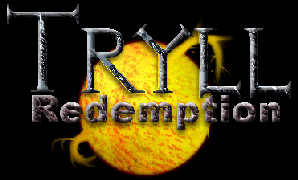Pluses
Cost per Plus
| +1 |
1,000 gp |
| +2 |
2,000 gp |
| +3 |
6,000 gp |
| +4 |
24,000 gp |
| +5 |
120,000 gp |
Formula: Item plus price starts at 1,000 gp. Each time the plus increases, the new plus is multiplied by the price for the plus of at the previous level.
Note that 75% of the creation cost goes towards the physical creation of the item to be enchanted. The remaining 25% is taken up by components, rare ingredients, fueling magical processes, etc.
Spells
Spell Level x 2,000 gp. This charge is levied for each use of that spell or spell like effect, per day. For instance, if a sword could cast heal (a 7th level cleric spell) once per day, the price to enchant the sword with that ability would be 14,000 gp. However, if we wanted a sword which could cast heal three times per day, the price would be tripled (42,000 gp).
If the spell can be used less than once per day (i.e. once per week), divide the base cost of the spell by the number of days between use. Using the above example, if our heal spell could be used only once per week, the cost of enchanting the sword with that spell would be only 2,000 gp. Note that, no matter how rarely the spell can be used, the minimum cost to enchant any spell is still 2,000 gp.
Intelligence
A magical item may or may not become intelligent on it's own, depending on the power of the weapon. However, if a mage wishes to guarantee that a magical item will be intelligent, there are three methods he can pursue.
The first method is for the mage to sacrifice one point of his own intelligence. This will create a magical item with an intelligence of 3 points less than the mage's original intelligence score. This lost point of intelligence cannot be regained by any forms of healing, restoration, or wish magic. Other means of intelligence gain can still be used (standard wishes, tomes, etc.). The magical item's alignment will be the same as the mage's at the time of the item's creation.
The second method is for a mage to cast a wish spell. This will enchant the item with its own intelligence (base 9, + 1d4, modified as the DM sees fit). The item's alignment will be Neutral, unless another wish is used to modify it.
The third, and perhaps most difficult, method, is to capture the life essence of a living being, and encase it in the item to be created. This is a difficult process, unless the individual involved is a knowing and willing participant in the ceremonies. If he is unknowing, or unwilling, the victim receives a total of 5 saving throws vs. spells (rolled at critical points during the creation process). If any of these saves succeeds, the process is interrupted, and the creation process is spoiled. The magical item must then pass a saving throw vs. acid or be rendered magically inert. This item is now unsuited for holding magical energies.
If the ceremony is successful, the subject creature is killed (cannot be raised or resurrected), and his intelligence and personality are transferred into the magical item. This item must then roll a saving throw vs. acid. If the save is successful, the intelligence of the new item is equal to the intelligence of the creature used.
If the save is failed, then the creature suffers badly from the magical processes involved in stripping his intelligence from his body. The intelligence of the item is equal to the intelligence of the creature used, minus 1d4.
Whether or not the intelligence is transferred fully, the new magical item has the alignment of the creature which provided its intelligence. If the process was carried out against the wishes of the subject creature (through coercion or trickery), then the new item will be understandably upset, and may wish to take revenge upon the mage who created it.
|

